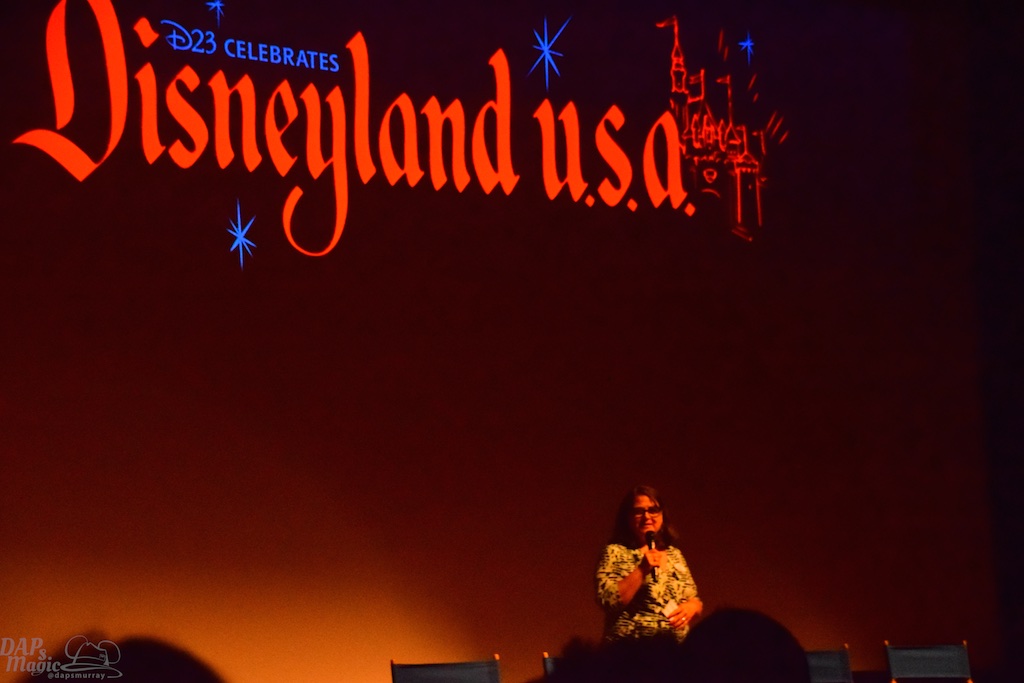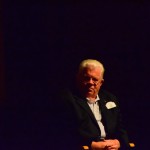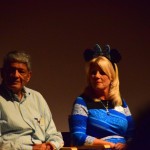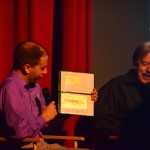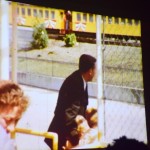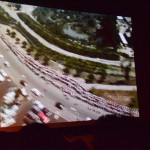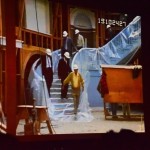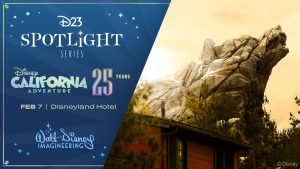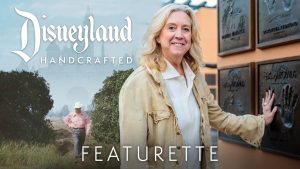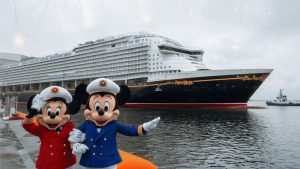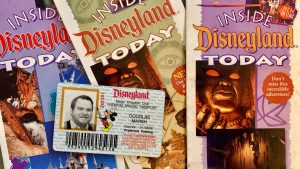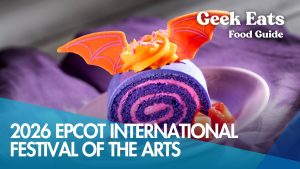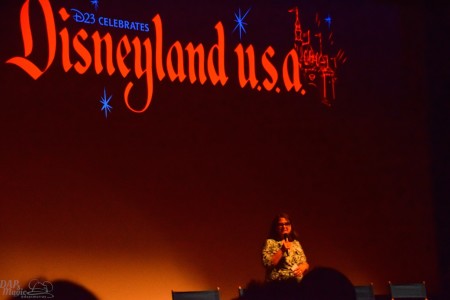 For Disneyland’s 60th anniversary, D23 played host to a special presentation to commemorate Disneyland’s 60th anniversary. Taking place on the day it first opened to the public, the presentation was held in the Main Street Opera House, home of Great Moments with Mr. Lincoln, which was also celebrating its 50th year at the park.
For Disneyland’s 60th anniversary, D23 played host to a special presentation to commemorate Disneyland’s 60th anniversary. Taking place on the day it first opened to the public, the presentation was held in the Main Street Opera House, home of Great Moments with Mr. Lincoln, which was also celebrating its 50th year at the park.
The presentation started with Becky Cline, director of Walt Disney Archives, hosting a panel of longtime Disney veterans including Jim Cora, Kim Irvine, Jack Lindquist, Marty Sklar, and Tom Nabbe (also Richard Sherman was in the audience but not a participant). All of them have had key roles in shaping the park into what it is today. Jim Cora has managed operations for several of the parks up to Disneyland Paris. Kim Irvine was mentored by John Hench and helped form a team that looks over plussing and sometimes preserving Disneyland itself. Jack Lindquist was head of marketing for Disneyland, and the first president over the park. Marty Sklar was head of Imagineering for a number of years. Tom Nabbe worked on opening day at Disneyland before ever going to Walt Disney World, retiring as manager of distribution services.
Each had a great number of stories about the park, and some had great stories about Walt himself. Some of it was giving support to longtime legends of how opening day went. When asked if it was really as bad as it was portrayed in the media, Jack, Tom and Marty said yes and even worse in some cases. Nabbe went on to tell of how he got the job as the first Tom Sawyer. He kept asking Mr. Disney for the job and finally got it. His story of having to show his report card to Walt and maintain a C average was all true according to him, though he eventually had to show it just to Dick Nunis.
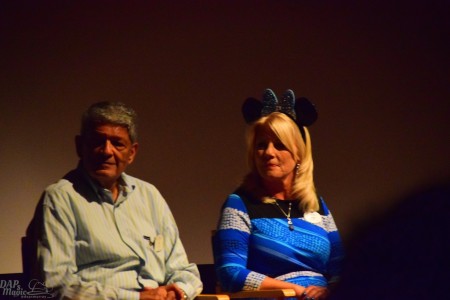 Kim Irvine talked about working with John Hench. He knew every detail on everything he worked on, and she told the story of how she went through the Plaza Inn with him. He told her where they made things like the stained glass, and where each lamp was from. When she had the task of redoing the restaurant into a different style, she said she talked to Hench about it. He loved the idea of them going to more of a “food court” style, to which she remarked how he was detailed but recognized how the park will always be changing.
Kim Irvine talked about working with John Hench. He knew every detail on everything he worked on, and she told the story of how she went through the Plaza Inn with him. He told her where they made things like the stained glass, and where each lamp was from. When she had the task of redoing the restaurant into a different style, she said she talked to Hench about it. He loved the idea of them going to more of a “food court” style, to which she remarked how he was detailed but recognized how the park will always be changing.
Jim Cora had great anecdotes about how operations came about, including his getting into that role. He was on attractions, talked to Walt Disney at a random time and was told to report to Van France who was developing training. This led to his helping shape how cast members work and portray the Disney image in everyday life.
One of the most fun questions came at the end of the panel when Cline asked them all what their favorite thing to do at Disneyland is. Lindquist’s response was that his favorite attraction is Marty Sklar. He remarked how both of them worked side by side for so long they have become great friends. Sklar responded by saying what his favorite Lindquist project was, which was the 30th anniversary giveaways. It was to boost attendance because nobody celebrates a 30th anniversary that large. His job was on the line, and attendance went up. Both men recalled how they had to have special turnstiles in the kennels to adhere to law about having a “no purchase necessary” chance to win a prize. They said 150 people seemed to come everyday in the morning going through the turnstile, and then again at night. By the end of the year 120 of them won prizes including 2 cars!
This segment was a delight to listen to and observe the great people who have been involved in Disneyland for a great number of years.
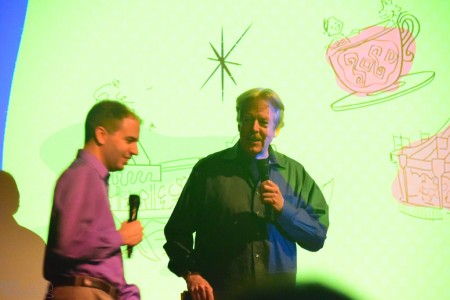 The next portion of the time was with Tony Baxter going over archival footage and pictures from early years of the park. He brought in some of the coveted tickets from the opening two days of the park. It also allowed for explanation of why July 17 was such a packed opening day. The gold tickets, which were only for a select few, allowed for almost unlimited number of guests to accompany the ticket holder. Then there was the silver ticket, which allowed the guest to come in during the opening ceremonies and beyond that time. Finally, a green ticket let people in after the ceremonies at about 5:30. A red ticket was given to children participating in various activities to be on screen.
The next portion of the time was with Tony Baxter going over archival footage and pictures from early years of the park. He brought in some of the coveted tickets from the opening two days of the park. It also allowed for explanation of why July 17 was such a packed opening day. The gold tickets, which were only for a select few, allowed for almost unlimited number of guests to accompany the ticket holder. Then there was the silver ticket, which allowed the guest to come in during the opening ceremonies and beyond that time. Finally, a green ticket let people in after the ceremonies at about 5:30. A red ticket was given to children participating in various activities to be on screen.
Some of the great footage shown were of July 18 opening footage. Things like the entrance to the current resort and the gates were shown. Some of the rides were shown as well, showing how different it was for things like the Jungle Cruise and Frontierland. Then, some pictures and footage from July 17 showed the behind the scenes look at how ABC was able to create a live production.
From there, time leading up to Walt’s passing was showcased. It was fascinating to see how things would be built around guests going on attractions. For example, people would be working on the Submarine Lagoon while kids drove Autopia cars. Great video showed Walt being very involved in attraction construction. Plywood sets were shown of what is now the entrance of “it’s a small world” with Walt Disney driving around to see what it was all like.
This portion ended with about 6 minutes of newly found color opening day video. Synced to audio from the original broadcast, it was a real treat to see this in a new way. There’s been a lot of showing of the original broadcast, but this showed much of the behind the scenes of it too. It was quite touching to end with the famous speech, but with color footage of Walt Disney giving it.
The whole event ended with a showing of a newly enhanced version of People and Places: Disneyland USA, a Cinescope film that was once shown in theaters.

